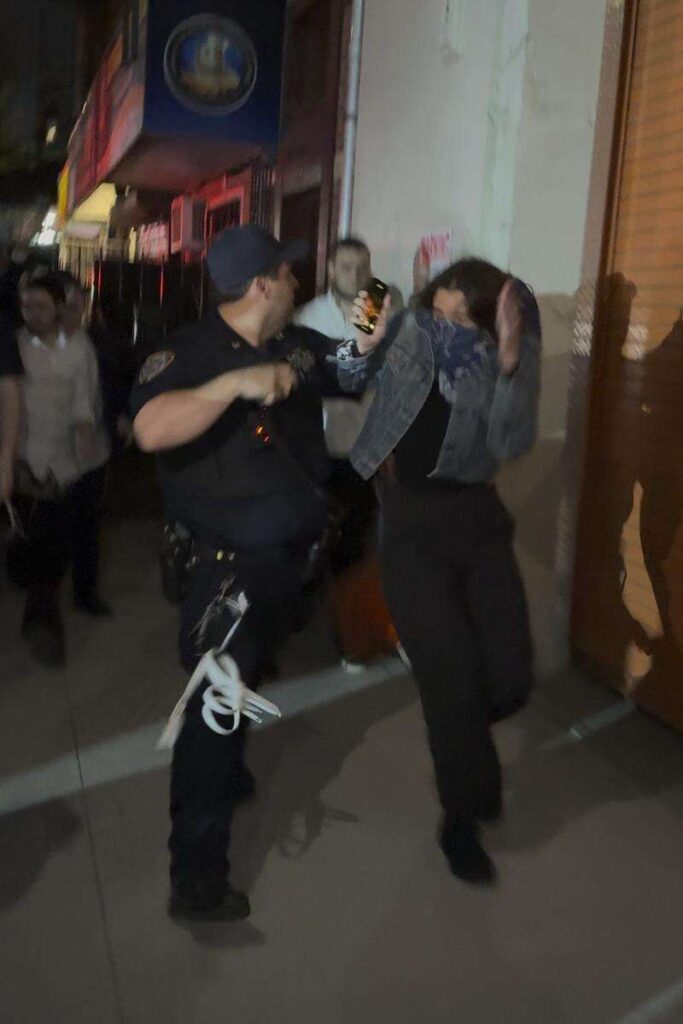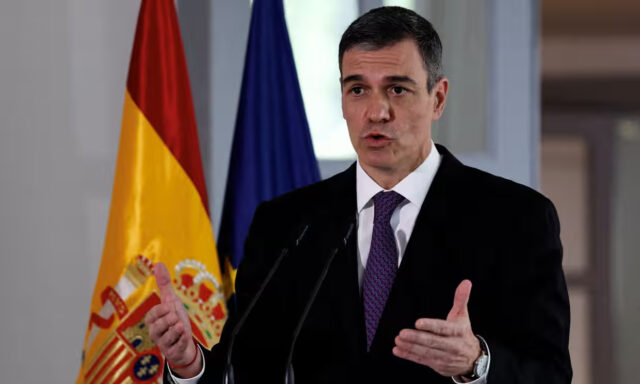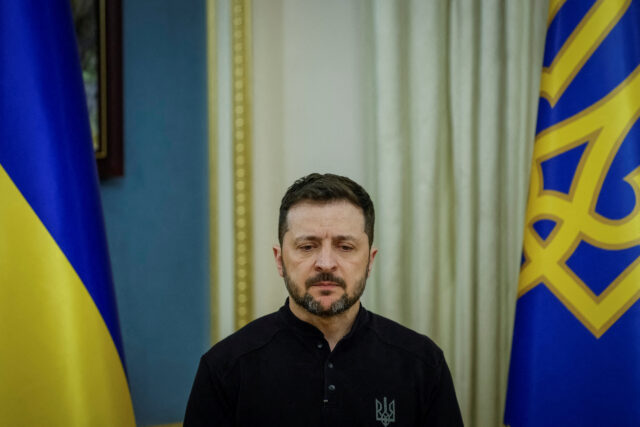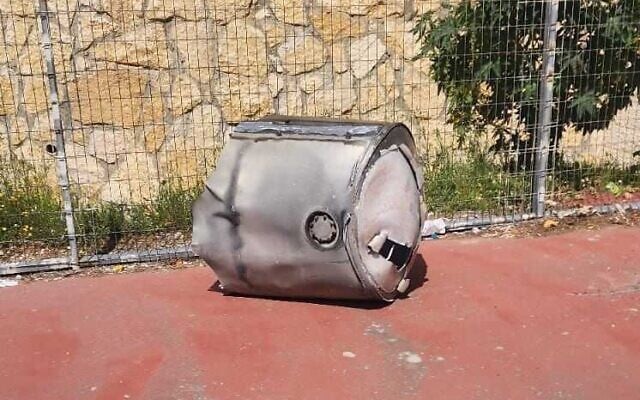Brooklyn Woman Attacked by Mob After Being Mistaken for Protester at Israeli Minister’s Speech
A neighborhood woman said she feared for her life Thursday night after being chased, kicked, and pelted with objects by a mob of Orthodox Jewish men near the Chabad-Lubavitch headquarters in Crown Heights. The group, mistaking her for a protester against visiting Israeli security minister Itamar Ben-Gvir, targeted her in a shocking display of violence caught on video.
The woman, a resident in her 30s who asked to remain anonymous out of safety concerns, told The Associated Press that she had only gone outside after hearing police helicopters overhead and was not part of the protests. Upon approaching the scene around 10:30 p.m., she covered her face with a scarf to avoid being filmed — a move that inadvertently made her a target.
“I Had Nowhere to Go”
“As soon as I pulled up my scarf, a group of 100 men came over immediately and encircled me,” the woman said. “They were shouting at me, threatening to rape me, chanting ‘death to Arabs.’ I thought the police would protect me, but they did nothing to intervene.”

With tensions escalating, a single police officer attempted to escort her to safety. However, the mob followed them for several blocks, jeering and hurling insults in both English and Hebrew. Video footage shows the woman being kicked, struck by a traffic cone, and assaulted with a trash can.
“This is America. We got Israel. We got an Army now,” one man can be heard shouting in the background of the footage.
Cornered against a building at one point, the woman said she was consumed by fear. “I realized at that point that I couldn’t lead this mob of men to my home. I didn’t know what to do. I was just terrified.”
Eventually, the police officer managed to get her into a police vehicle, though not before a man shouted “Get her!” and the crowd cheered as she was driven away.
The woman suffered bruises and severe emotional distress from the incident, stating she now feels unsafe in her own neighborhood, where she has lived for a decade.
Police Investigation Underway
The New York Police Department confirmed that one person was arrested and five summonses were issued following Thursday night’s clashes, but it remains unclear if any were related to the assault on the woman.
Mayor Eric Adams addressed the violence, condemning it unequivocally. “Let me be clear: None of this is acceptable, in fact, it is despicable,” Adams said. “New York City will always be a place where people can peacefully protest, but we will not tolerate violence, trespassing, menacing, or threatening.”
According to Adams, police are investigating multiple incidents related to the protest, including injuries sustained by a pro-Palestinian woman who was also attacked by counterprotesters.
Rising Tensions Over Ben-Gvir Visit
The appearance of Israeli security minister Itamar Ben-Gvir — known for his hardline stances and previous conviction for racist incitement — triggered heated protests in Brooklyn. His visit has been controversial due to his rhetoric promoting Jewish power and calls for confrontations with Palestinians.
Jewish groups condemned the anti-Ben-Gvir protesters for allegedly targeting a religious site, while others expressed concern over the violence committed by local youths against bystanders.
A Chabad-Lubavitch spokesman, Rabbi Motti Seligson, denounced both sides: “We condemn the crude language and violence of the small breakaway group of young people; such actions are entirely unacceptable and wholly antithetical to the Torah’s values.”
“The fact that a possibly uninvolved bystander got pulled into the melee further underscores the point,” he added.
A Painful Reminder of the Past
The incident reawakens painful memories of the 1991 Crown Heights riots, where long-standing tensions between Black and Jewish communities exploded into violence after the death of a Black child struck by a Jewish motorcade.
Though decades have passed since that unrest, Thursday night’s events highlight the deep divisions and volatility that remain — and the challenges of maintaining peace in a community with a complex, often fraught history.
For the woman caught in the chaos, the consequences are personal and immediate. “I’m afraid to move around the neighborhood where I’ve lived for a decade,” she said. “It doesn’t seem like anyone in any position of power really cares.”


















